Linear Equations
A linear equation is an equation that represents a straight line when graphed on a coordinate plane. The general form of a linear equation in one variable is: y = mx + b, where y represents the dependent variable, x represents the independent variable, m is the slope, and b is the y-intercept.
Slope-Intercept Form
The slope-intercept form of a linear equation is y = mx + b. The slope (m) represents the rate of change of the line, and the y-intercept (b) represents the point where the line intersects the y-axis.
Point-Slope Form
The point-slope form of a linear equation is y - y1 = m(x - x1). This form is useful when you know the slope and a point on the line.
Standard Form
The standard form of a linear equation is Ax + By = C, where A, B, and C are constants. This form is useful for graphing and finding the x and y-intercepts.
Graphing Linear Equations
To graph a linear equation, you can use the slope-intercept form to identify the y-intercept and slope, or you can use the x and y-intercepts if the equation is in standard form.
Solving Linear Equations
To solve a linear equation, you can use various methods such as substitution, elimination, or graphing. The goal is to isolate the variable (x or y) to find its value.
Study Guide
- Understand the different forms of linear equations: slope-intercept form, point-slope form, and standard form.
- Be able to identify the slope and y-intercept from the equation in slope-intercept form.
- Practice graphing linear equations and finding the x and y-intercepts.
- Practice solving linear equations using various methods.
- Understand the relationship between the equation of a line and its graphical representation.
Remember to always check your solutions by substituting the values back into the original equation to ensure they satisfy the equation.
[Linear Equations] Related Worksheets and Study Guides:
.◂Math Worksheets and Study Guides Eighth Grade. Linear equations
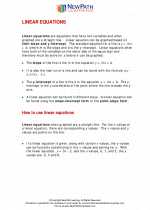
 Worksheet/Answer key
Worksheet/Answer key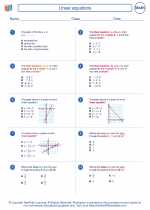
 Worksheet/Answer key
Worksheet/Answer key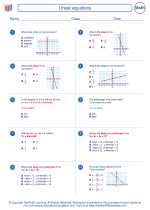
 Worksheet/Answer key
Worksheet/Answer key
 Worksheet/Answer key
Worksheet/Answer key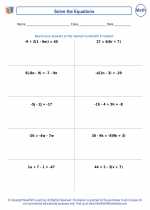
 Worksheet/Answer key
Worksheet/Answer key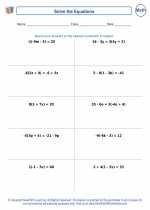
 Worksheet/Answer key
Worksheet/Answer key
